NauticalNotebook.com
© 2010-
Please contact us with any questions or comments
Wartime Conversions of Ocean Liners
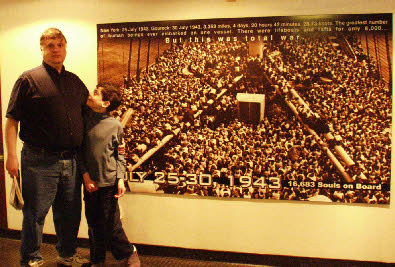
By Neil Plotnick
While descriptions of the great ocean liners of the 20th Century most often conjure up images of elegant dining rooms filled with vacationing passengers, wartime has historically seen ocean going palaces converted into troopships, ferrying thousands of soldiers on a single trip. Some of the most famous names in steamship history, including Mauretania, Olympic, Leviathan, Nieuw Amsterdam (II), Queen Mary and Queen Elizabeth 2 were among those converted to troopships during times of war.
Large ocean liners were critical to support military operations for two major reasons. First, as some of the largest vessels afloat, they could transport massive numbers of men and material over vast stretches of ocean. Second, these luxurious vessels were some of the fastest ships available. With the threat of submarine or airborne attack, speed was the greatest defensive attribute that a ship could have.
While some ships were prized for their troop carrying capacity, others were converted
into armed merchant ships. Equipped with guns and trained crews, they would become
hunters and search for rival countries merchant ships and try to sink them. It is
a sobering statistic that compared to all the branches of the American military,
the US Merchant Marine suffered the highest casualty rate during World War II. With
U-
Liners were used extensively during both World Wars by all belligerents. While the modern jet transport spelled the death knell of liners as transportation for both civilians and military personal alike, the Falklands War between Great Britain and Argentina provided a more recent example of how critical the great luxury ships could still be.
The Conversions
Ships built for passenger service already contained many of the features needed for troop carrying. Galleys, dining rooms and numerous cabins were designed to carry and feed hundreds of people as they crossed the world’s oceans. Conversions to military use essentially saw efforts to maximize capacity in any way possible. The first step would typically involve removing all items that were not needed for sustaining or berthing the maximum number of troops that could be carried. Furniture, paintings, pianos and everything else not needed for war would be removed and stored on land for reinstallation once the fighting had ceased. Every available space on board would then be stuffed with hammocks and cots to accommodate the fighting men who would soon be in battle in lands far from where they grew up.
For troopships, guns would be mounted on decks to provide some form of defensive
capability. While not designed to go toe-
Camouflage was considered to be a critical factor in liners ability to survive in hostile waters. “Dazzle paint” was typically applied to the hulls of liners used as troop ships. Closely resembling zebra stripes, it was thought that the alternating dark and light stripes would obscure the size, speed, heading and type of ship when viewed from a distance. The actual effectiveness of this camouflage has been debated by numerous naval historians. Perhaps the greatest contribution was to the morale of those sailing on these ships. The belief that everything possible was being done to ensure their survival was certainly able to offer some comfort as they moved through hostile waters.
Ships that survived their wartime duties would be stripped of their guns and returned to passenger revenue service following extensive refurbishments that could take several years. Sadly, many passenger liners were lost to enemy action during both World Wars. While virtually no examples of wartime liners still exist, visitors to the Queen Mary in Long Beach, California can take an extensive tour that illustrates the cramped quarters and imagine the fear that must have been present for the many thousands of soldiers who experienced crossing the North Atlantic knowing that their ship was a prized target.
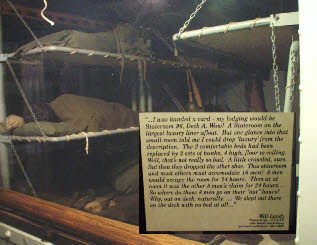
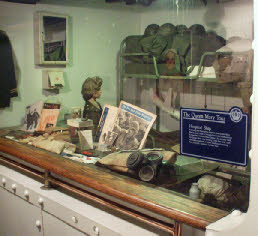
Notable Examples
Highlighted below are the stories of just several of the many ocean liners that were temporarily converted to troopships during the 20th Century.
Olympic – White Star Line (First World War)
When she entered service in 1911, RMS Olympic was considered one of the most successful and beautiful ships ever produced. Replete with luxurious lounges and dining salons, her great size made Olympic a grand addition and flagship to the White Star fleet. With a cruising speed of over 20 knots, she would be well suited to the need to transport soldiers across the Atlantic. When war broke out in 1914, Olympic ferried many American citizens from Europe back to the United States.
During the Great War, Olympic moved massive numbers of troops in both the Atlantic
and Mediterranean theaters. It was during a fateful day in 1918, when Olympic was
steaming eastbound from New York to Great Britain, that her encounter with a U-
Queen Mary – Cunard (Second World War)
Queen Mary was christened in 1934 and embarked on her maiden voyage two years later—yet, her first year of service was not exactly up to her designers’ expectations. Plagued by propeller vibrations, soot from her funnels and electrical problems, a complete overhaul was required one year after her initial voyage. Her repairs were successful and by August 1936 she had captured the Blue Riband (awarded to passenger ships that recorded that fastest transatlantic voyage) with a record crossing of less than 4 days.
During World War II, Queen Mary would transport more than 750,000 troops in total, including several instances of more than 10,000 soldiers on a single voyage. Her speed was her greatest defensive weapon. Unlike most merchant ships that sailed in convoys during both World Wars, Queen Mary sailed without escorts except when she was nearing port.
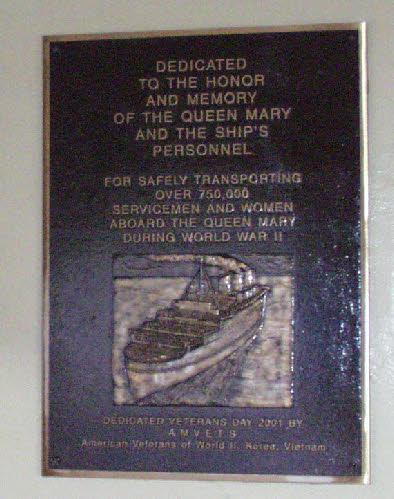
Plaque on Queen Mary dedicated to the safe transport of more than 750,000!
After the War, Queen Mary was reconfigured for passenger use and resumed her regular transatlantic service in 1947. After a long and distinguished sailing career, Queen Mary was retired in 1967. Since 1971, she has been moored at Long Beach, California, operating as a hotel, museum, convention center, and tourist attraction. Stripped of her boilers and other gear, she is marketed as a way for patrons to experience what a luxury liner was like back in the Golden Age of ocean liner travel.
SS United States – United States Line (Honorable Mention)
While never serving in war, SS United States was constructed from the keel up with a dual role of ocean liner and troop transport. As such, her design was subject to strict US Navy standards and several unique features. For example, her hull design was considered to be secret and during construction, great care was taken to guard against spying by rival nations.
SS United States’ separate engine rooms promised a level of redundancy in case of attack. Her massive power plants also gave the ship unprecedented speed for a vessel of her size. It is widely acknowledged that during sea trials in 1952, SS United States reached speeds in excess of 43 knots. Modern cruise ships operate at a much more sedate 18 to 20 knots during their voyages.
As with all ships, fire is one of the greatest dangers and SS United States was built with as little flammable material as possible. The only wood on the ship was reportedly contained in her kitchen butcher blocks and pianos. As designed, the ship was envisioned as transporting more than 10,000 troops and being converted from cruise ship to military transport in only a few days.
Today, approximately 60 years after launching, the SS United States remains afloat at a pier in Philadelphia. Viewed from nearby roadways, her twin funnels are badly faded and her future is unclear. A preservation society, the SS United States Conservancy, would like to see her redeveloped as part of a museum or other type of educational destination. The massive cost of renovation and maintaining any aging ship makes this a very daunting proposition.
Queen Elizabeth 2 – Cunard (Falklands War)
The Falklands Islands are part of a tiny group of islands located in a remote portion of the South Atlantic, off the coast of Argentina. The Falklands were under de facto control by Great Britain. Claimed as the Isle Malvines by Argentina, they became a scene of fierce fighting in 1982.
In the excellent article, “QE2 in the Falklands War” by Richard H. Wagner, the requisition of the vessel and conversion to a troopship is given extensive attention. Not only was the ship stripped of her artwork and other passenger amenities, provisions were made to allow helicopters to land on the ship. With 8,000 miles between Britain and the Falklands and no nearby ports available for refueling, her great range and capacity were critical to the British effort to retake the islands from the Argentines.
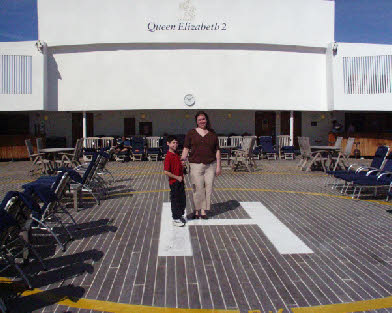
Helicopter Pad on QE2 in 2003
The threats to the world’s most famous liner were very real. Armed with sea-
Tragedies
As can be expected, many passenger liners were lost during wartime. Among the most notable were the following.
HMHS Britannic – White Star Line (First World War)
Launched in early 1914, Britannic was a sister to Olympic and the ill-
MS Wilhelm Gustloff – Hamburg-
This German ship was sunk by a Russian submarine in 1945 with the loss of nearly 10,000 souls. This is widely held to be the single greatest loss of life aboard a vessel in history. During the later parts of World War II, the Gustloff was being used to transport German civilians and military personnel across the Baltic Sea as the German army was retreating from Russian forces.
SS Normandie – French Line (Second World War)
One of the largest and most luxurious ships in history, Normandie was the pride and flagship of the French Line. Her Art Deco inspired interiors, opulent lounges and handsome profile were matched by powerful engines and performance. On her maiden voyage, she captured the Blue Riband. This beautiful ship was the largest, fastest and longest liner in the world.
With the threat of war gripping Europe, Normandie made her last passenger voyage, crossing the Atlantic and docking in New York City in August 1939. She was mothballed and sat idle for more than two years as the War progressed. A few days after the Japanese attack on Pearl Harbor, Normandie was seized by American authorities and provisions were made to convert her to a troopship. It was during this conversion in February 1942 that a welder’s torch sparked a fire that ignited supplies stored in the former Grand Lounge.
Tons of water were poured into the hull in an effort to fight the fire. With the weight of all this water, the once magnificent ship slowly rolled onto her side and settled into the bottom of New York Harbor. It took more than one year to salvage the hull and by then the war was winding down and the need for a large troopship had passed. In an inglorious end to what was once the “Queen of the North Atlantic,” Normandie was scrapped.
Closing Thoughts
This article examined just some of the ocean liners built for civilian passenger service that were also used for military purposes. This history is full of examples of heroism, tragedy and the inescapable fact that ocean liners were instrumental in helping to win the war. The hundreds of thousands of American, British, Canadian and other troops that fought in Europe, the Pacific and elsewhere could never have been transported in the sheer number and at the speed that the large passenger ships provided.




